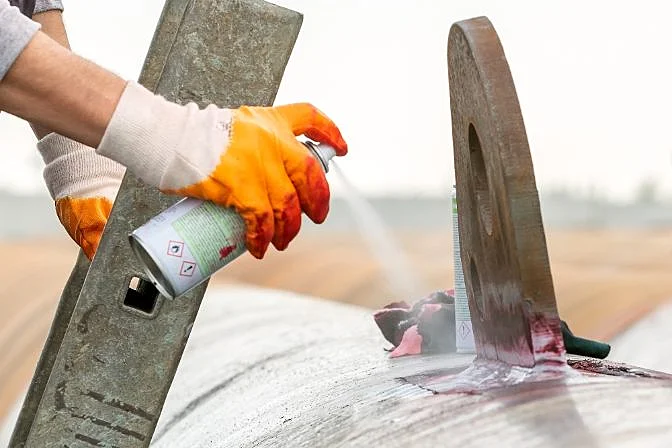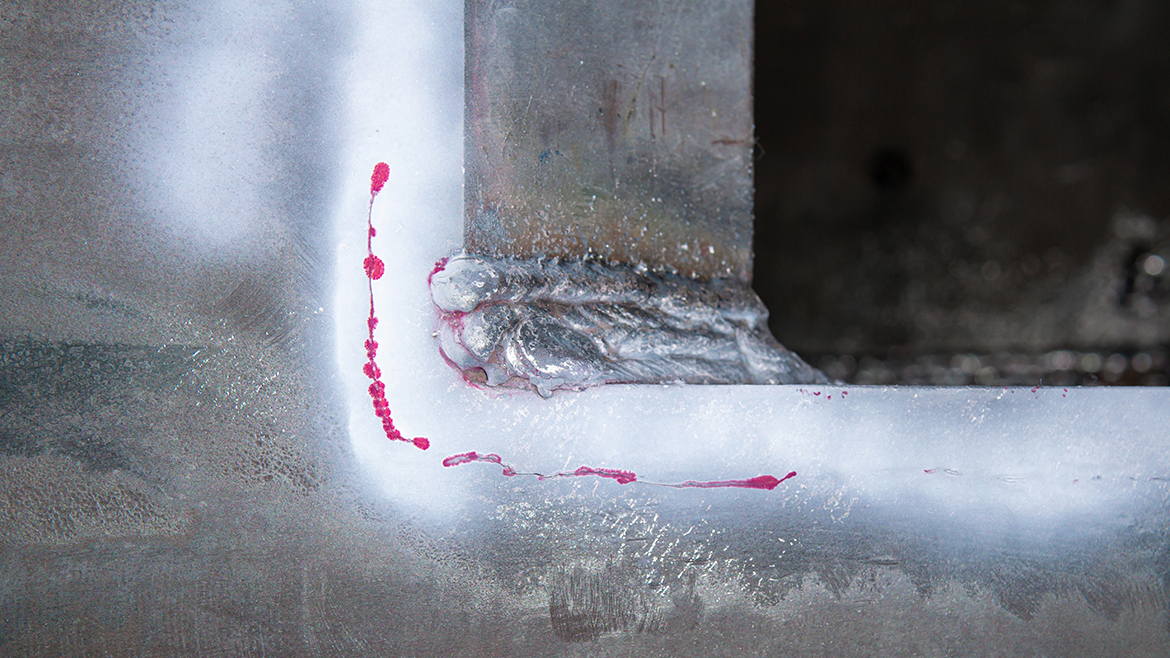Optimize Project Timelines & Minimize Operational Disruptions
Penetrant Testing (PT), also referred to as dye penetrant testing or liquid penetrant inspection (LPI), is a widely used non-destructive testing (NDT) method for detecting surface discontinuities in smooth, nonporous materials. At TechCorr, our PT inspection services leverage the principles of capillary action, where a liquid penetrant is applied to the surface and drawn into any surface-breaking defects such as cracks, seams, or welding defects.
After excess penetrant is removed and a developer is applied, trained inspectors can identify indications of flaws. Our PT services are highly versatile, applicable to a wide range of materials including metals, composites, ceramics, glass, rubber, and plastics. Whether in the field or in-house, TechCorr's PT inspections provide accurate and reliable results, ensuring the integrity and safety of your assets across various industries. The technique is based on the ability of a liquid to be drawn into a "clean" (in other words, unobstructed) surface breaking flaw by capillary action. After an appropriate period of time for penetration has passed, called the "dwell time," excess penetrant on the surface is removed and a developer applied.
The developer acts as a blotter and draws the penetrant from the flaw to reveal its presence. Penetrants with a visible dyed added (color contrast) require sufficient white light to insure proper inspection, while penetrants with a fluorescent dye added need to be used in darkened conditions with an ultraviolet or "black light". This method is used to inspect a variety of product forms including castings, forgings, and weldments. The structural steel, automotive, petrochemical, power generation, and aerospace industries are a few examples that utilize liquid penetrant inspection.
After excess penetrant is removed and a developer is applied, trained inspectors can identify indications of flaws. Our PT services are highly versatile, applicable to a wide range of materials including metals, composites, ceramics, glass, rubber, and plastics. Whether in the field or in-house, TechCorr's PT inspections provide accurate and reliable results, ensuring the integrity and safety of your assets across various industries. The technique is based on the ability of a liquid to be drawn into a "clean" (in other words, unobstructed) surface breaking flaw by capillary action. After an appropriate period of time for penetration has passed, called the "dwell time," excess penetrant on the surface is removed and a developer applied.
The developer acts as a blotter and draws the penetrant from the flaw to reveal its presence. Penetrants with a visible dyed added (color contrast) require sufficient white light to insure proper inspection, while penetrants with a fluorescent dye added need to be used in darkened conditions with an ultraviolet or "black light". This method is used to inspect a variety of product forms including castings, forgings, and weldments. The structural steel, automotive, petrochemical, power generation, and aerospace industries are a few examples that utilize liquid penetrant inspection.




